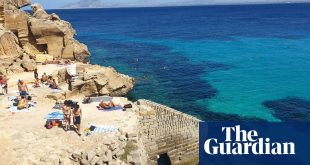It’s the most exclusive lost property office in the world. Deep underground, in a thrumming, humidified laboratory, a world-historical statue is being reunited with its ancient marble foot. Of all the rooms at the Acropolis Museum in Athens, this is the most pulse-quickening, which is saying something considering that the building houses treasures of antiquity including friezes from the Parthenon.
Prof Nikolaos Stampolidis, director-general of the museum, is playing the role of an archaeological Prince Charming: he must decide if the deftly chiselled toes are a match for the sculpture of a kouros, or naked youth on display as part of the permanent collection until conservationists began to suspect that the foot bone connected to the leg bone might be the wrong one. Perhaps the foot in the lab, which was found elsewhere at the Acropolis, will be a perfect fit. If museum staff are right, these jigsaw pieces, separated for millennia, have been within just a few square metres of one another.
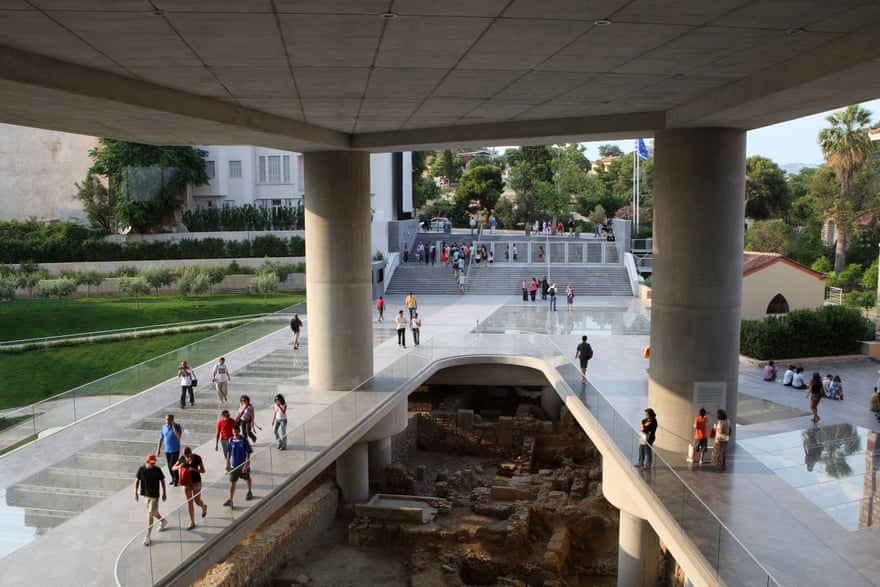
It’s not the first time that the kouros has required the ministrations of Stampolidis and his team. He points out parts of the statue, where marble the colour of clotted cream, patinaed with age, gives way to sections of plaster cast that are so bright and white by comparison that they might have been furnished by a Harley Street orthodontist. The figure’s arm has been broken in several places and researchers have detected signs of fire damage, believed to date from 480BC, when the Persians burned down the Acropolis. The carved images of the old site tend to suffer damage to necks and ankles because they are weak points, just as they are for us.
Contemplating the lame statue, you might be reminded of the story of Achilles and his weak spot from the books of Homer, especially if you happen to set eyes on a bust of the great poet, which is propped up on a laboratory bench and wearing an expression of hard-won forbearance. Like the kouros, the Homer is in the lab for running repairs. Stampolidis and his team will return their astonishing trove to the public galleries when their work is done. They hope that one day soon they can solve an even bigger jigsaw puzzle than the crocked statue, and reassemble all the surviving pieces of sculpture from the Parthenon. That would require the return of the Parthenon (or Elgin) marbles from the British Museum, where they have been for more than 200 years. Talks have begun between the UK and Greece, through the auspices of Unesco, the world heritage body.
The Parthenon is the star attraction of the Greek capital, of course. So the natural inclination is to look up; but as Stampolidis’s basement bodyshop demonstrates, a lot of the interesting action is to be found underground.
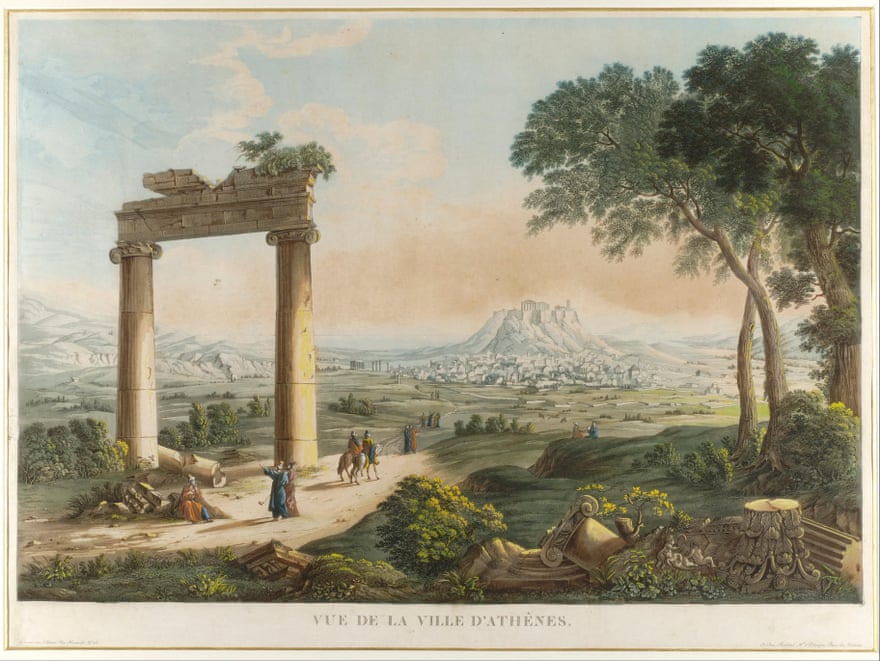
The museum houses artefacts recovered from the rock where the Acropolis stands and its surrounding slopes. The museum itself lies over ruins from Roman and early Byzantine Athens, and it was below ground level that I encountered one of the best-preserved relics of the city’s past. The Hadrian aqueduct is an ancient watercourse dating from AD125 that runs for 12 miles beneath some of the most traffic-thronged streets in Europe. There’s nothing like it in the rest of the continent. Much of it is dry today, but Athens is bringing it back to life as a valuable resource in local irrigation and to green the areas it passes through.
On a sweltering morning, the sunken passage has the chalky cool of a catacomb. I’m walking behind my guide, George Sachinis, director of strategy and innovation at Eydap, the city’s water company, who points out that we are able to stand upright. “The Romans needed the aqueduct to be high not for the water but for the men who were excavating it,” he says. They sank 400 wells to the depth of the water table, and then joined them to each other. The gentlest of inclines meant that gravity delivered water to Hadrian’s settlement.
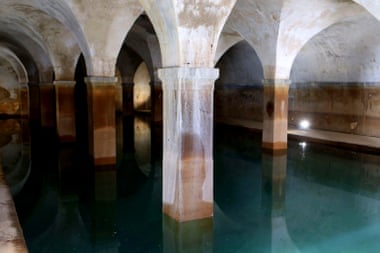
But after the Romans left, the aqueduct disappeared from memory and wasn’t rediscovered until the late 19th century, when locals noticed that some of their neighbours had no difficulty growing vegetables, even in the driest months. These lucky folk lived by the old wells. At present, the aquifer beneath Athens discharges into the sea, with no environmental benefit. The city is going to divert this flow through the old aqueduct again, and pump it up at points along the route in order to water market gardens, allotments and livestock. The work will begin in 2023, and is due to take four years.
Making use of this natural resource, instead of wasting it, will reduce energy costs, and help Athenians to keep their city green in temperatures that have been known to reach 48C. At the very point where Sachinis and I are standing – the mouth of the old Roman tunnel – the aqueduct will debouch into new water gardens, a lush and refreshing oasis at the heart of the metropolis.
Not all of Athens’ underground attractions are strictly subterranean, however. Take the events of the summer festival, which runs in the capital and the neighbouring city of Epidaurus. Although thousands head to the slopes of the Acropolis to watch opera and rock from the marble bleachers of the classical pleasure dome that is the Odeon of Herodes Atticus, there’s an alternative, off-the-books aesthetic at another venue across town. Pireos 260 is a disused furniture factory in an industrial quarter near the port of Piraeus. The rust-streaked metal walls of the former workshop will reverberate to electronic music, dance and theatre.
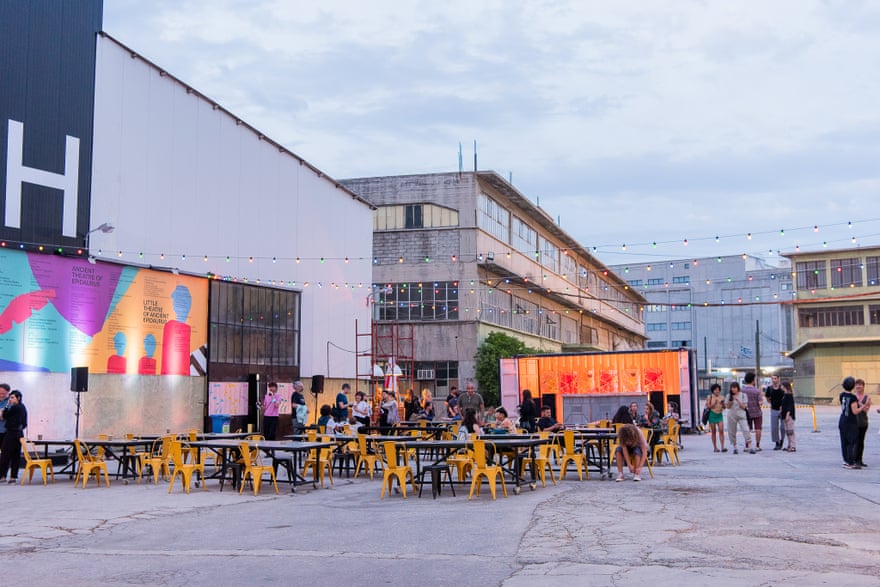
“This is a hidden area of Athens,” says Maria Panagiotopoulou, one of the festival organisers. “Foreigners might miss it if it wasn’t for the shows and events, but it’s full of bars and cafes. The real life of Athens is here.”
The old sofa mill has been staging a new production, The Other Side of the Tempest, a mashup of Orson Welles’ unfinished last movie, The Other Side of the Wind, and The Tempest. The Welles screenplay was itself a kind of homage to the Shakespeare play. During rehearsals, the actors take a break behind the great hangar of the cashiered plant, while stagehands and sparks pass by in their traditional costume of black T-shirts and cargo shorts. The place looks like the backlot of an old film studio. The cultures of different ages are in dialogue with each other this summer in Athens, where the achilles heel of an antique statue can be a connection between the past and the present.
 Top Naija News: Nigerian News, Breaking News Nigeria and World News Top Naija News is a daily news publication in Nigeria, delivering the latest breaking news in Nigeria and around the world.
Top Naija News: Nigerian News, Breaking News Nigeria and World News Top Naija News is a daily news publication in Nigeria, delivering the latest breaking news in Nigeria and around the world.


